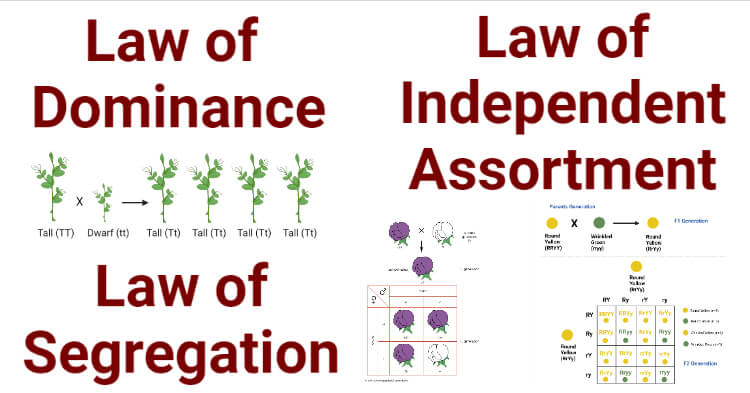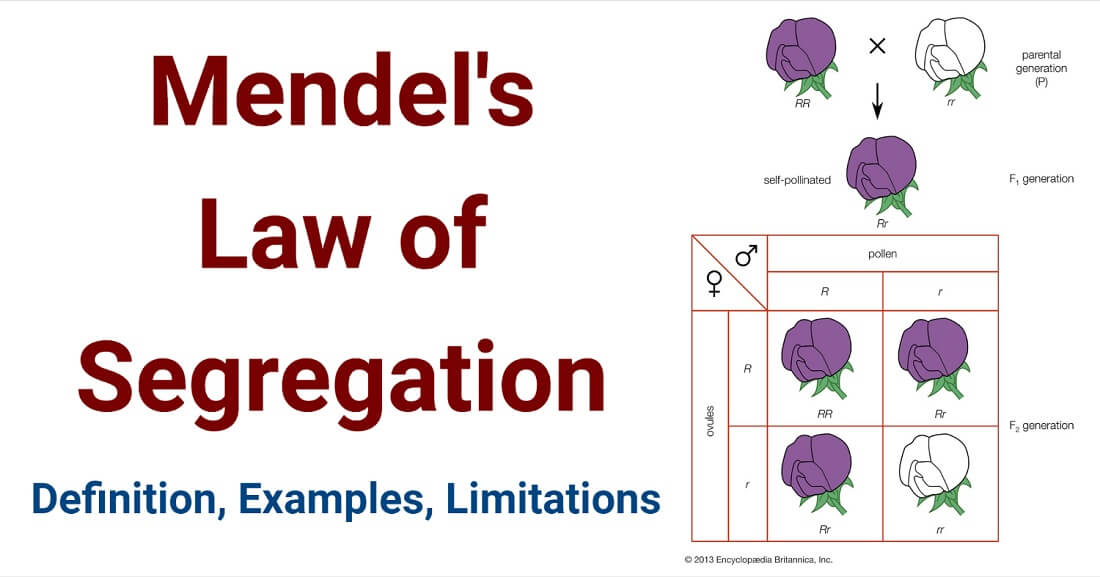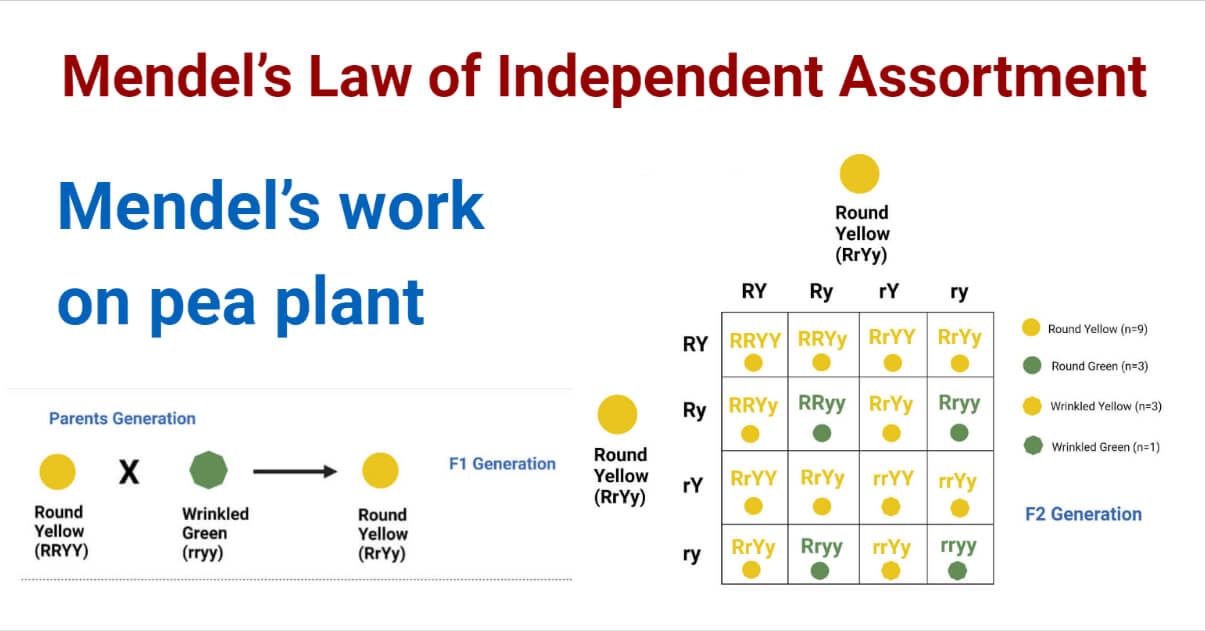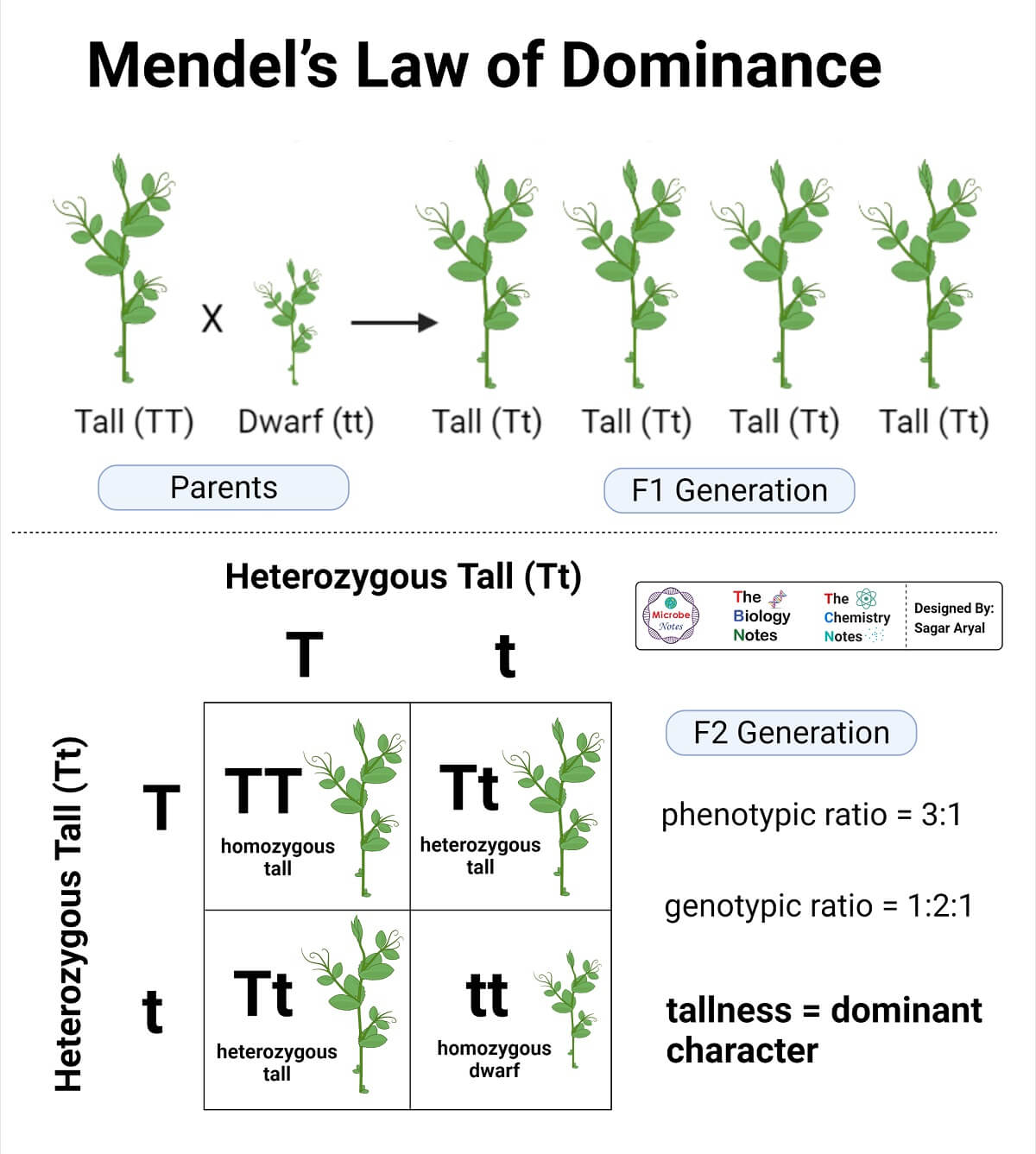- In the 1860s, an Austrian monk named Gregor Mendel introduced a new theory of inheritance based on his experimental work with pea plants.
- Mendel believed that heredity is the result of discrete units of inheritance, and every single unit (or gene) was independent in its actions in an individual’s genome.
- According to this Mendelian concept, the inheritance of a trait depended on the passing-on of these units.
- For any given trait, an individual inherits one gene from each parent so that the individual has a pairing of two genes. We now understand the alternate forms of these units as ‘alleles’.
- If the two alleles that form the pair for a trait are identical, then the individual is said to be homozygous and if the two genes are different, then the individual is heterozygous for the trait.
- The breeding experiments of the monk in the mid‐1800s laid the groundwork for the science of genetics.
- He studied peas plant for 7 years and published his results in 1866 which was ignored until 1900 when three separate botanists, who also were theorizing about heredity in plants, independently cited the work.
- In appreciation of his work he was considered as the “Father of Genetics”.
- A new stream of genetics was established after his name as Mendelian genetics which involves the study of heredity of both qualitative (monogenic) and quantitative (polygenic) traits and the influence of environment on their expressions.
- Mendelian inheritance while is a type of biological inheritance that follows the laws originally proposed by Gregor Mendel in 1865 and 1866 and re-discovered in 1900.

Interesting Science Videos
Mendel’s Experiment
Mendel carried out breeding experiments in his monastery’s garden to test inheritance patterns. He selectively cross-bred common pea plants (Pisum sativum) with selected traits over several generations. After crossing two plants which differed in a single trait (tall stems vs. short stems, round peas vs. wrinkled peas, purple flowers vs. white flowers, etc), Mendel discovered that the next generation, the “F1” (first filial generation), was comprised entirely of individuals exhibiting only one of the traits. However, when this generation was interbred, its offspring, the “F2” (second filial generation), showed a 3:1 ratio- three individuals had the same trait as one parent and one individual had the other parent’s trait.
Mendel’s Laws
I. Mendel’s Law of Segregation of genes (the “First Law”)

Image Source: Encyclopædia Britannica.
- The Law of Segregation states that every individual organism contains two alleles for each trait, and that these alleles segregate (separate) during meiosis such that each gamete contains only one of the alleles.
- An offspring thus receives a pair of alleles for a trait by inheriting homologous chromosomes from the parent organisms: one allele for each trait from each parent.
- Hence, according to the law, two members of a gene pair segregate from each other during meiosis; each gamete has an equal probability of obtaining either member of the gene.
II. Mendel’s Law of Independent Assortment (the “Second Law”)

- Mendel’s second law. The law of independent assortment; unlinked or distantly linked segregating genes pairs behave independently.
- The Law of Independent Assortment states that alleles for separate traits are passed independently of one another.
- That is, the biological selection of an allele for one trait has nothing to do with the selection of an allele for any other trait.
- Mendel found support for this law in his dihybrid cross experiments. In his monohybrid crosses, an idealized 3:1 ratio between dominant and recessive phenotypes resulted. In dihybrid crosses, however, he found a 9:3:3:1 ratios.
- This shows that each of the two alleles is inherited independently from the other, with a 3:1 phenotypic ratio for each.
III. Mendel’s Law of Dominance (the “Third Law”)

- The genotype of an individual is made up of the many alleles it possesses.
- An individual’s physical appearance, or phenotype, is determined by its alleles as well as by its environment.
- The presence of an allele does not mean that the trait will be expressed in the individual that possesses it.
- If the two alleles of an inherited pair differ (the heterozygous condition), then one determines the organism’s appearance and is called the dominant allele; the other has no noticeable effect on the organism’s appearance and is called the recessive allele.
- Thus, the dominant allele will hide the phenotypic effects of the recessive allele.
- This is known as the Law of Dominance but it is not a transmission law: it concerns the expression of the genotype.
- The upper case letters are used to represent dominant alleles whereas the lowercase letters are used to represent recessive alleles.
References
- Verma, P. S., & Agrawal, V. K. (2006). Cell Biology, Genetics, Molecular Biology, Evolution & Ecology (1 ed.). S .Chand and company Ltd.
- Gardner, E. J., Simmons, M. J., & Snustad, D. P. (1991). Principles of genetics. New York: J. Wiley.
- https://www.cliffsnotes.com/study-guides/biology/plant-biology/genetics/mendelian-genetics
- http://kmbiology.weebly.com/mendel-and-genetics—notes.html
- http://knowgenetics.org/mendelian-genetics/
- https://en.wikipedia.org/wiki/Mendelian_inheritance
- https://www.acpsd.net/site/handlers/filedownload.ashx?moduleinstanceid=40851&dataid=33888&FileName=Mendelian%20Genetics.pdf

Good to know when one works with plants like me.
excellet ohhh